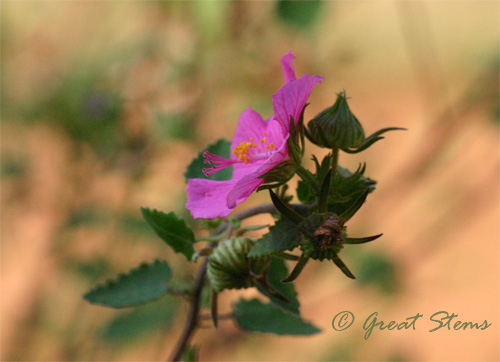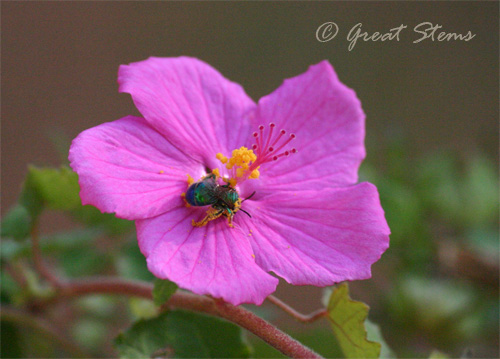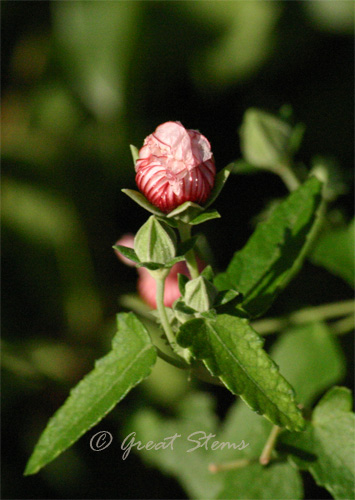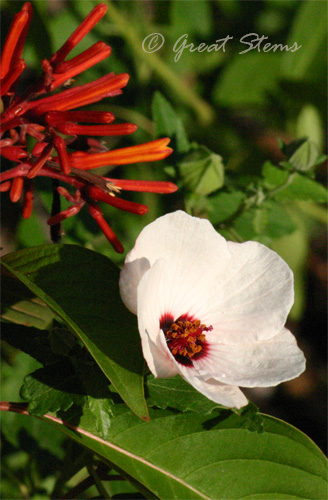A Rock Rose by any other name would be just as pretty…
Here in Texas, our native Rose Pavonia, Pavonia lasiopetala, just loves the hot summers. When other plants curl up for protection from the baking sun, the Rose Pavonia opens up its flowers and puts on a beautiful display.

A gorgeous metallic turquoise female sweat bee (Halictidae) covered herself in extensive pollen grains by visiting the flowers. This behavior not only identifies her as female in the sweat bee world but also distinguishes her from a Cuckoo Wasp, which is remarkably similar in appearance.
 The Pavonia flower closes at night and reopens in the warm sunlight. I just love its closed state, like a little flower puppy or kitten all curled up and sleeping. Here is the Brazilian Rock Rose, Pavonia braziliensis, looking like a tiny peppermint-candy rose bud.
The Pavonia flower closes at night and reopens in the warm sunlight. I just love its closed state, like a little flower puppy or kitten all curled up and sleeping. Here is the Brazilian Rock Rose, Pavonia braziliensis, looking like a tiny peppermint-candy rose bud.

When it opens, it is a striking white version of its Texas cousin.

That’s Firebush just behind it, another heat-loving plant. I’m glad these plants enjoy the Texas sun — they remind us of the good side of our hot summers (but thank goodness fall is approaching).
Part of the hibiscus family? We have a few indigenous species. My yellow one made the first flower – tada – and the camera died. Now I’ll have to wait till the year rolls around to try again.
Pavonia is, in fact, related to the Hibiscus — both are in the mallow family, Malvaceae. I hope yours blooms again in the new year!
Hi,
The second picture is fantastic.
What an interesting insect! Is it truly a kind of bee, or is that just one of those misleading common names?
It truly is a bee, one of our hard-working solitary native bees.
Hi Meredith, I like your blog because of the creatures that tend to appear together with your beautiful flowers frequently.
I think its amazing that you can tell the difference between a male and female bee. Is it the same with all bees – ie the ones that cover themselves in pollen are normally females?
I think they usually are, Rosie, but I can’t speak for all bee species, that’s for sure. Those lazy men! 😉